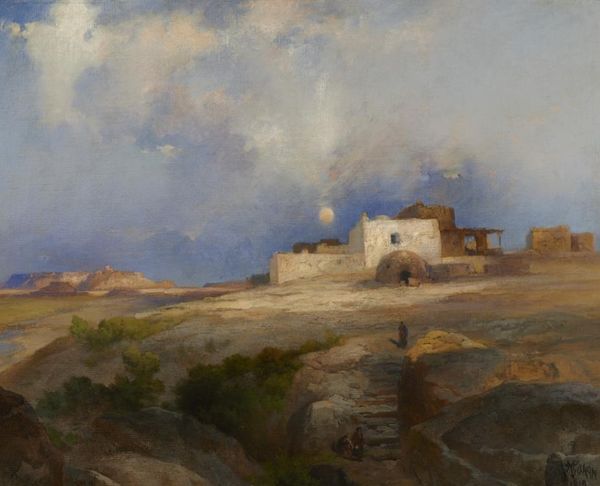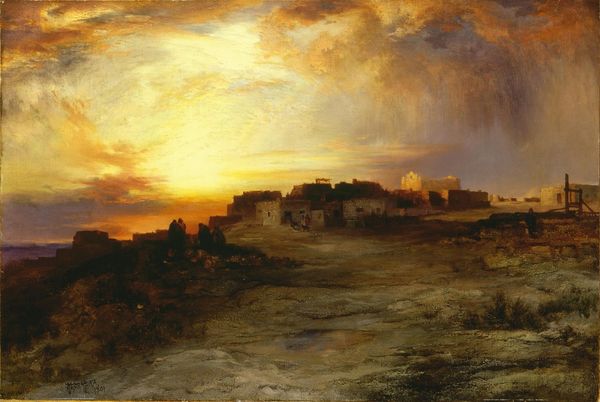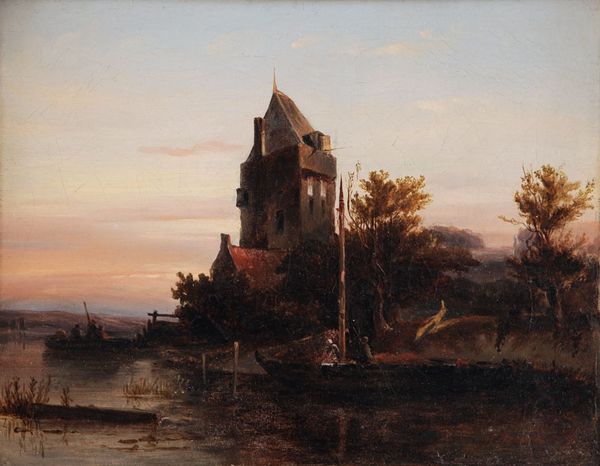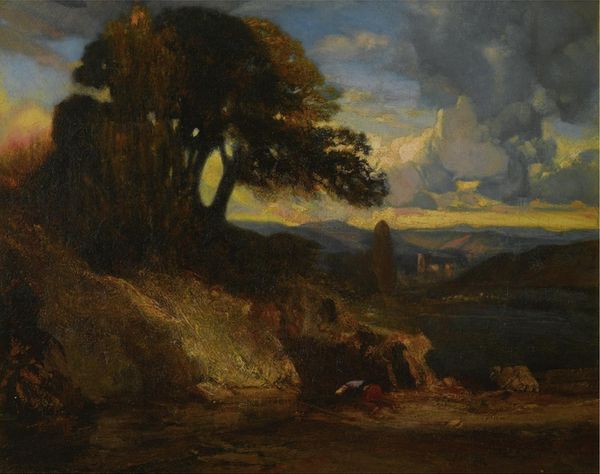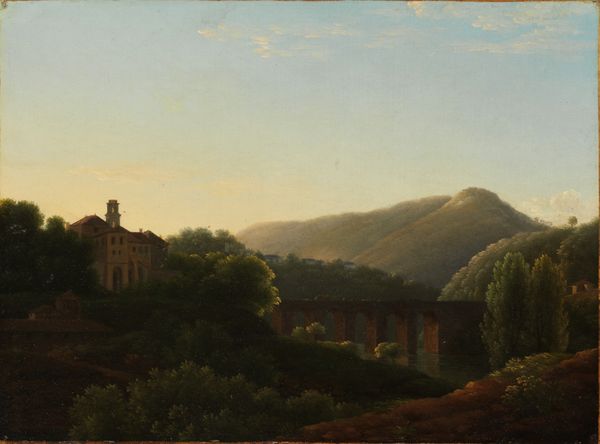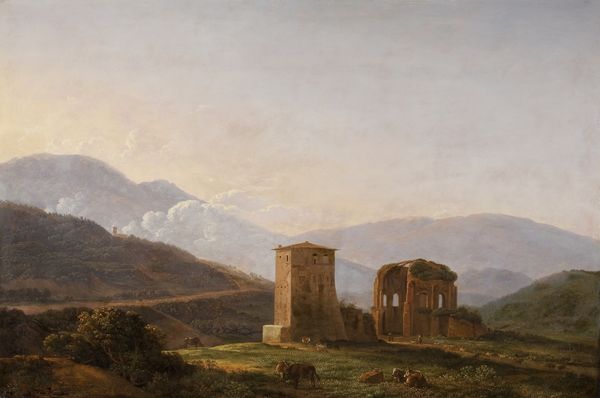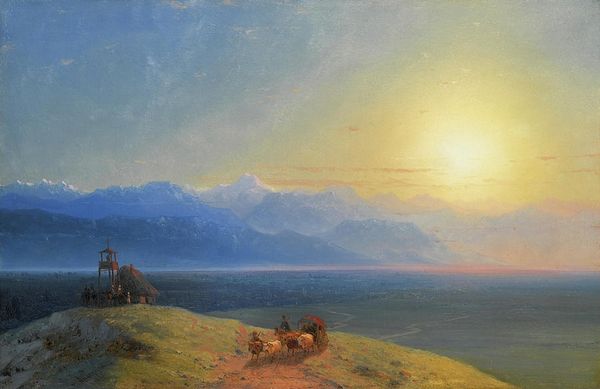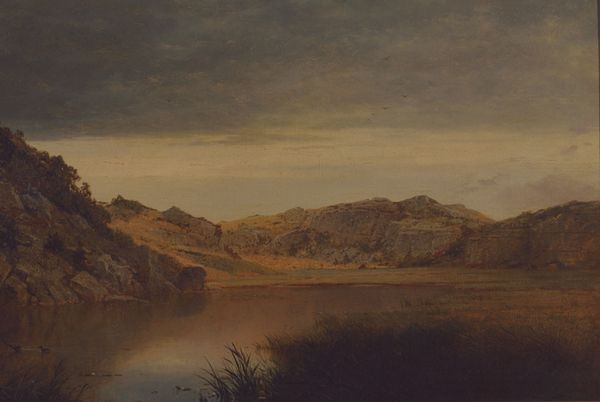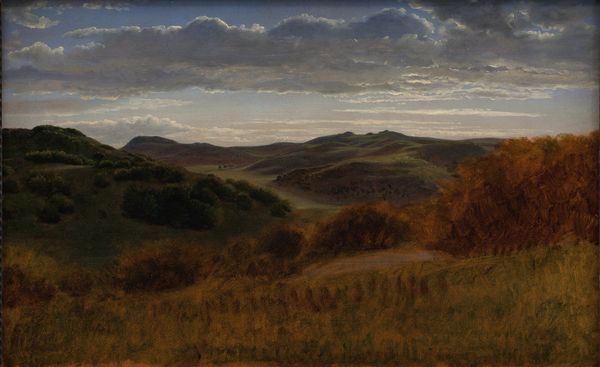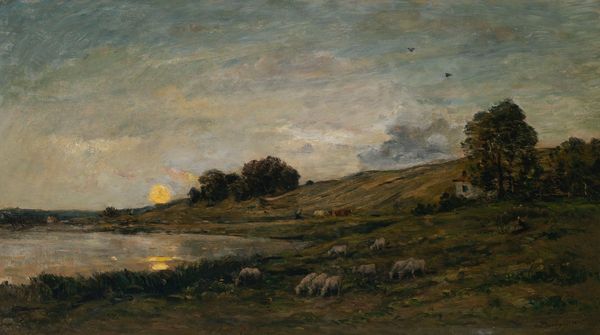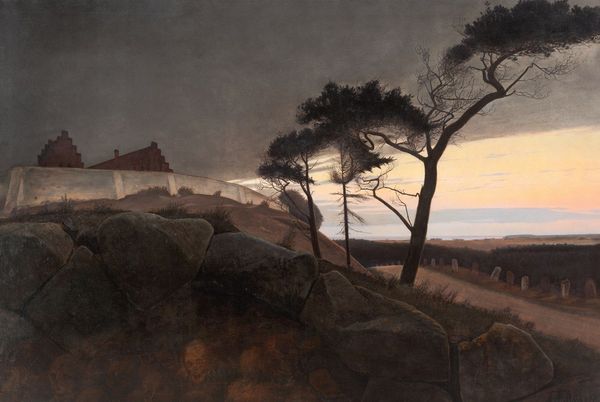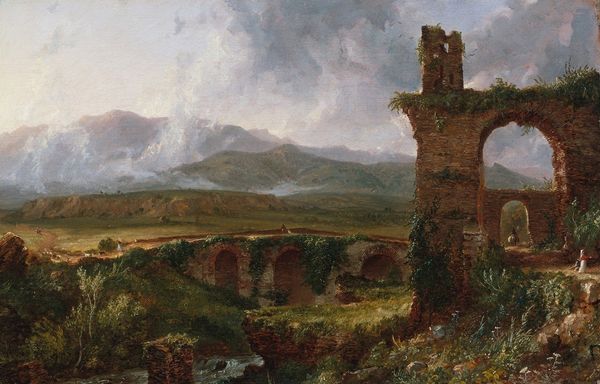
oil-paint
#
oil-paint
#
landscape
#
oil painting
#
romanticism
#
history-painting
Copyright: Public Domain: Artvee
Editor: So, this is Johan Christian Dahl’s oil painting, “The ruined Church at Avaldsnes at Karmøy,” created around 1820. There’s this incredible, brooding atmosphere… the imposing clouds, the melancholic ruins. It makes you wonder about time and history, I guess. What catches your eye most about this piece? Curator: Immediately, the composition speaks volumes. The ruined church isn't just a pretty backdrop; it's a symbol. Think about the sociopolitical context of the time. The rise of nationalism often looked to romanticized versions of the past for legitimacy and identity. Do you see how the dramatic lighting and the decay work to evoke a particular feeling about the Norwegian past? Editor: Yes, the church feels deliberately placed, almost… staged? But, like, what history are we supposed to see here? Curator: Exactly! Consider how ruins like these became potent symbols in the Romantic era. Dahl is deliberately highlighting a narrative about Norway's heritage. It connects the landscape with historical memory and the power structures embedded within it. Do you think this idealized ruin aligns perfectly with reality, or could it also be pushing a nationalistic agenda? Editor: I see. The ruin isn't just *there*. It's there to communicate a specific version of the past that benefits a particular narrative, maybe one about Norwegian strength and resilience… Even if the reality of those pasts might have been totally different! I suppose paintings like this really do create our idea of ‘history’, huh? Curator: Precisely. Dahl’s painting reveals how art functions as a social tool. Reflecting upon its cultural impact enriches its appreciation. Editor: That’s an eye-opening angle, thank you for making it clearer!
Comments
No comments
Be the first to comment and join the conversation on the ultimate creative platform.
